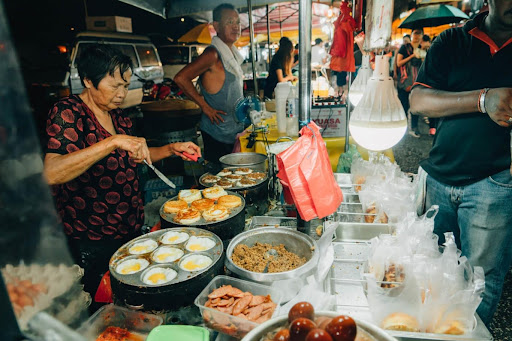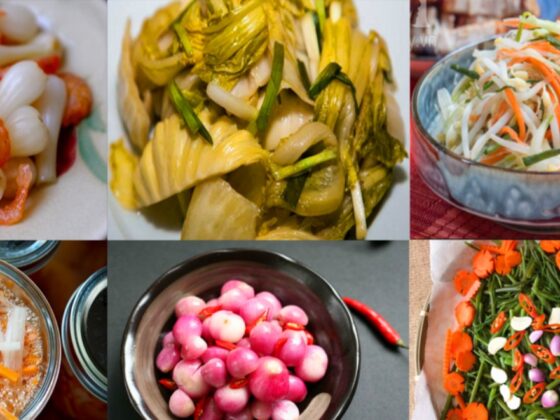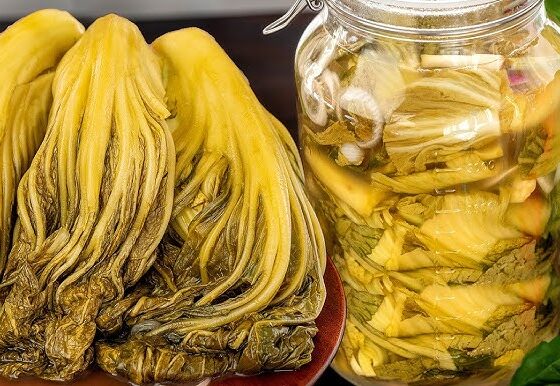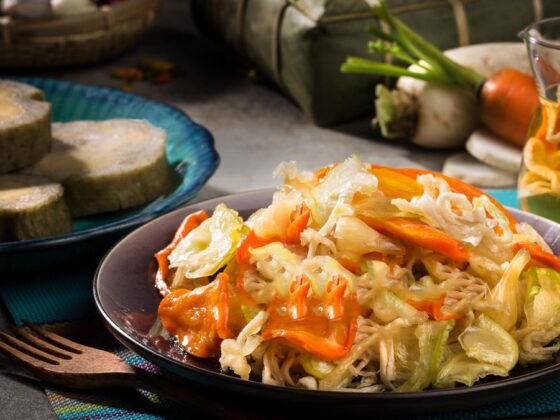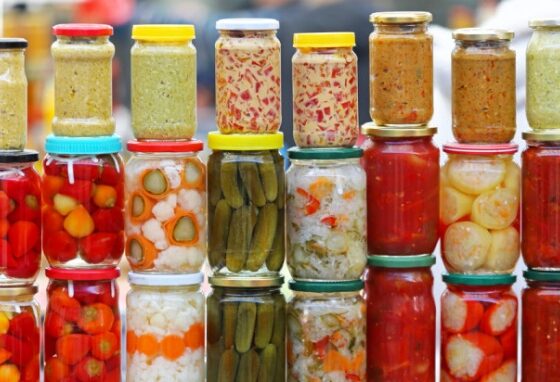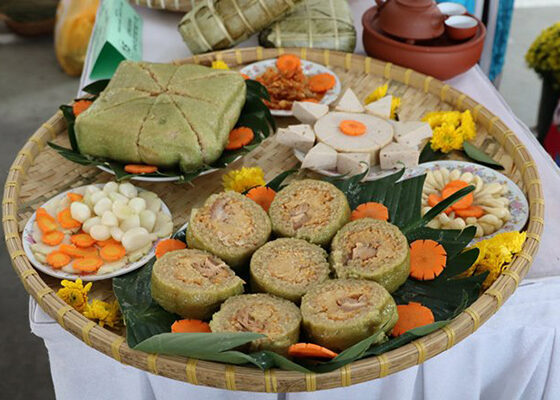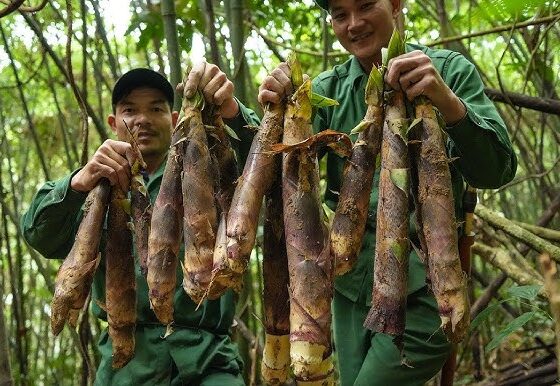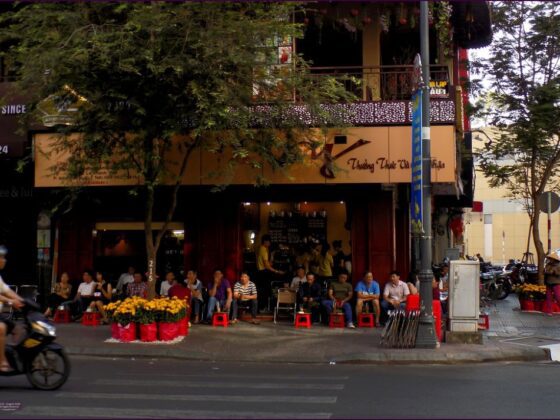Table of Contents Show
Vietnam, known for its vibrant street food culture, offers a delightful array of flavors that can elevate any outdoor adventure. As an expert in Vietnam’s local cuisine and an avid traveler, I’ve discovered that the journey from bustling markets to serene trails is not just about the sights; it’s also about the incredible Vietnam outdoor cuisine that can fuel your adventures. Let’s explore how to create a perfect meal plan using local ingredients, making your camping or hiking experience truly unforgettable.
Read more interesting posts here:
- Market Trails: A Trekker’s Journey to the Vibrant Bắc Hà Sunday Market
- Lảo Thẩn Mountain Trek: Conquer the Untamed Dragon’s Spine
- Salt and Silence: A Guide to Côn Đảo National Park Trekking
Step 1: Sourcing ingredients for your Vietnam outdoor cuisine at local markets
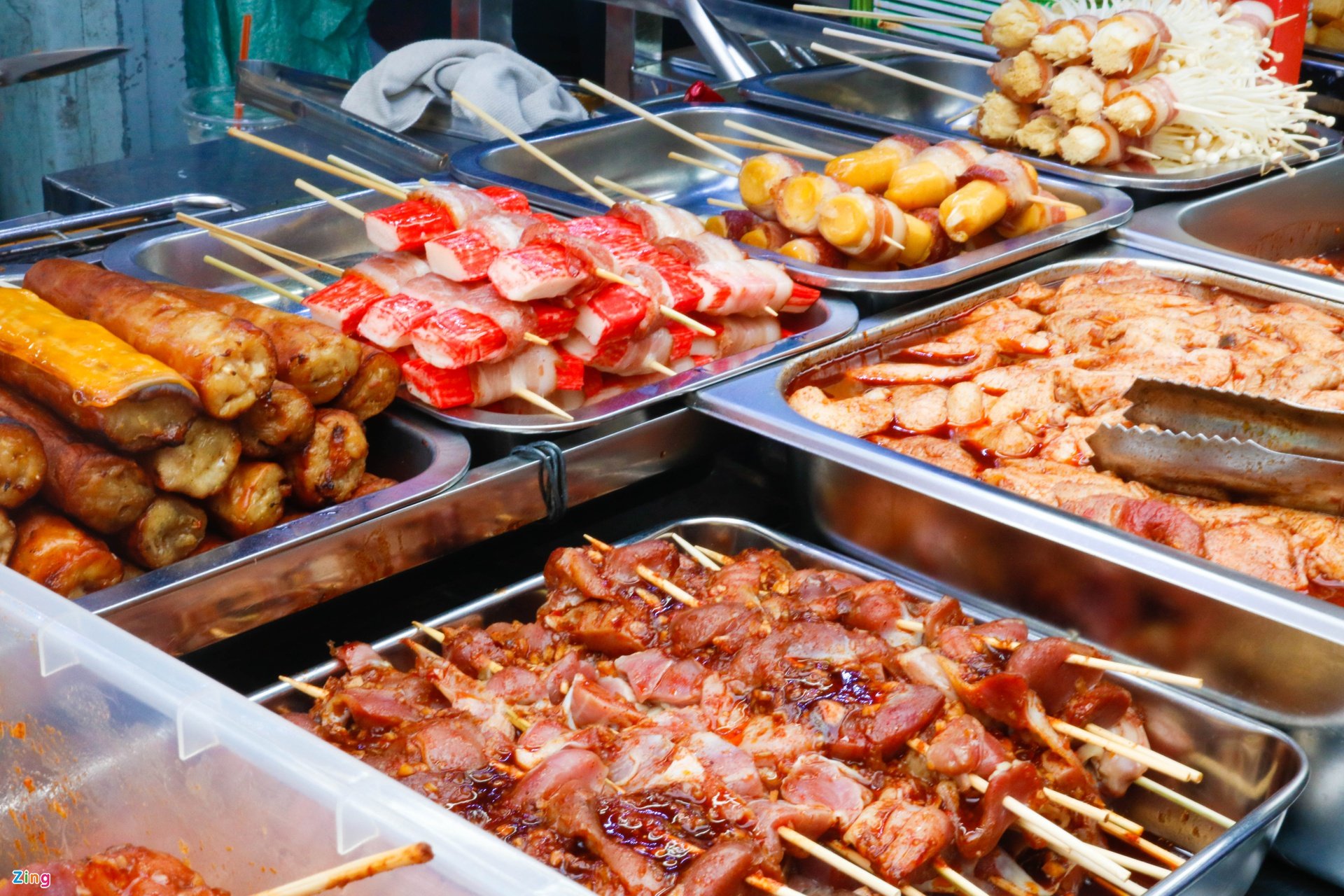
Before setting off on your outdoor adventure, a visit to a local market is essential for an authentic Vietnam outdoor cuisine experience. Markets in Vietnam are alive with color, energy, and an enticing array of fresh produce, meats, and spices. In cities like Hanoi, Ho Chi Minh City, and Da Nang, as well as charming towns such as Hoi An and Nha Trang, you’ll find markets teeming with life.
Start your culinary journey by exploring the Dong Xuan Market in Hanoi. Here, you can find everything from fragrant herbs to fresh seafood. Don’t miss the chance to sample local specialties like bánh mì (Vietnamese baguette sandwiches) or phở (noodle soup) to fuel your day of exploration.
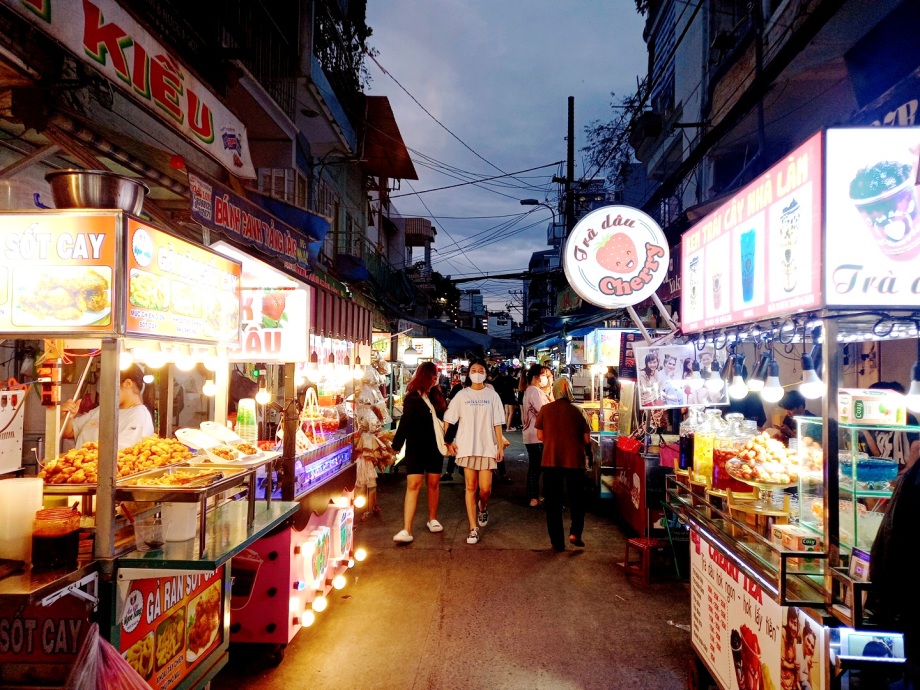
In Ho Chi Minh City, visit the Ben Thanh Market for a bustling experience. Picking up fresh herbs like cilantro and mint, local fruits, and freshly caught fish can set the stage for delicious meals on the trail.
Over in Da Nang, the Han Market is a must-visit, where you can stock up on tropical fruits like lychee and rambutan, as well as local snacks. Meanwhile, Hoi An’s Central Market offers a unique blend of fresh ingredients and traditional food stalls that perfectly capture the essence of Vietnam outdoor cuisine, inspiring your next outdoor cooking adventure. Finally, Nha Trang’s coastal markets provide a bounty of fresh seafood, perfect for grilling during your beach camping adventures.
Step 2: Packing for your Vietnam outdoor cuisine adventure
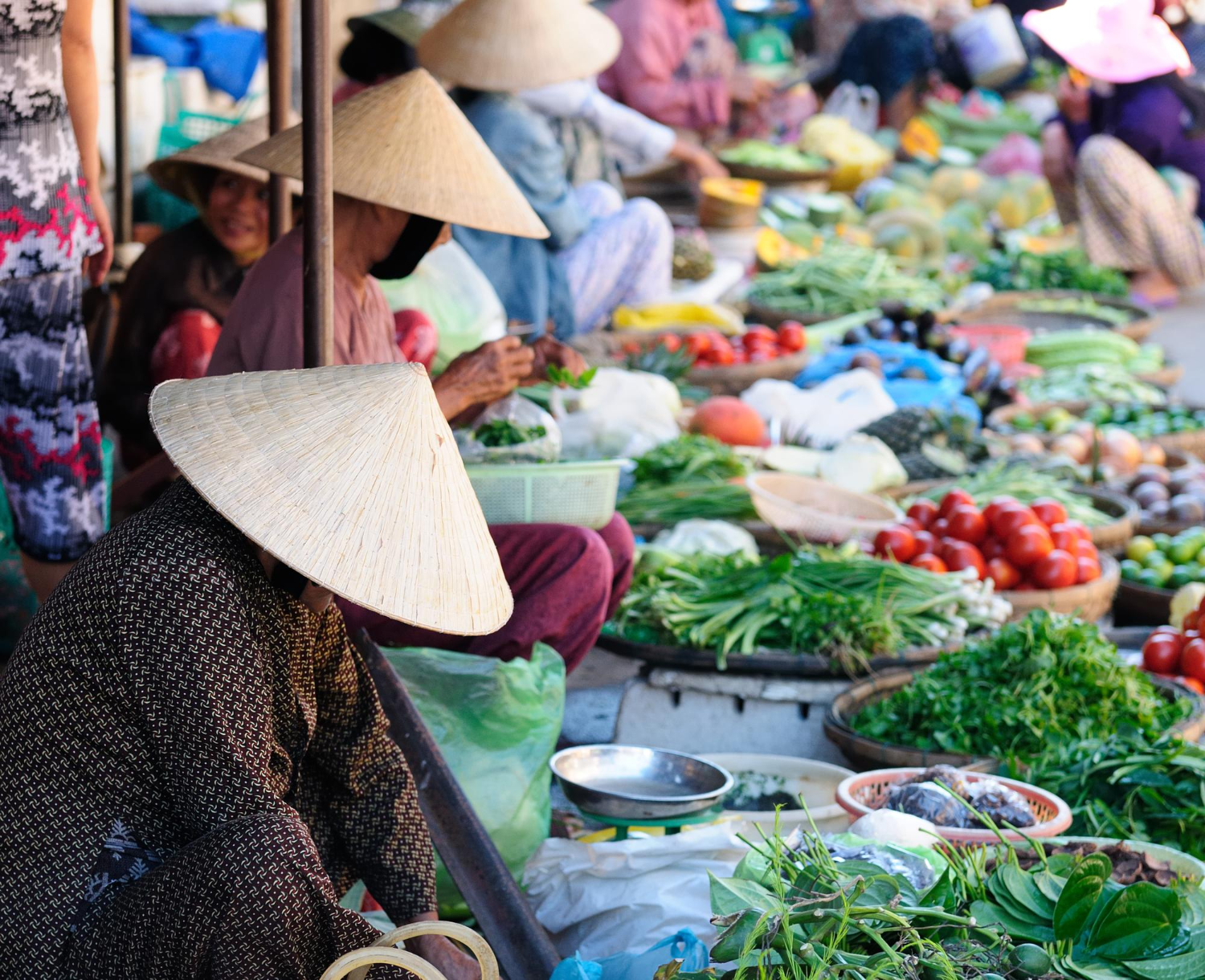
When it comes to outdoor meals, it’s essential to pack foods that are not only tasty but also nutritious and easy to carry. For travelers who want to truly savor the flavors of Vietnam outdoor cuisine, here are some must-have items to include in your outdoor culinary kit:
1. Rice and Noodles
Both rice and noodles are staples in Vietnamese cuisine and serve as great bases for any meal. Consider packing instant noodles (mì ăn liền) that are lightweight and quick to prepare. You can enjoy them with fresh vegetables and local meats you pick up from the market.
2. Fresh Vegetables and Herbs
Vietnamese cuisine is known for its emphasis on fresh ingredients. For those exploring Vietnam outdoor cuisine, bring along vegetables like bell peppers, carrots, and cucumbers, as well as herbs like basil, mint, and cilantro. These can easily be added to meals for extra flavor and nutrition.
3. Dried Meats and Fish
For protein, consider packing dried pork or dried fish. These options are lightweight, high in protein, and have a long shelf life, making them perfect for hiking or camping trips.
4. Snacks and Sweets
Don’t forget to pack some local snacks! Items like bánh tráng (rice paper) are great for quick energy, and you can wrap them with fresh herbs and meats for a light meal. Local fruits, such as dried mango or jackfruit chips, can also provide a sweet treat while you’re on the trail, making them a delightful part of Vietnam outdoor cuisine.
Step 3: Simple & delicious Vietnam outdoor cuisine ideas for the trail
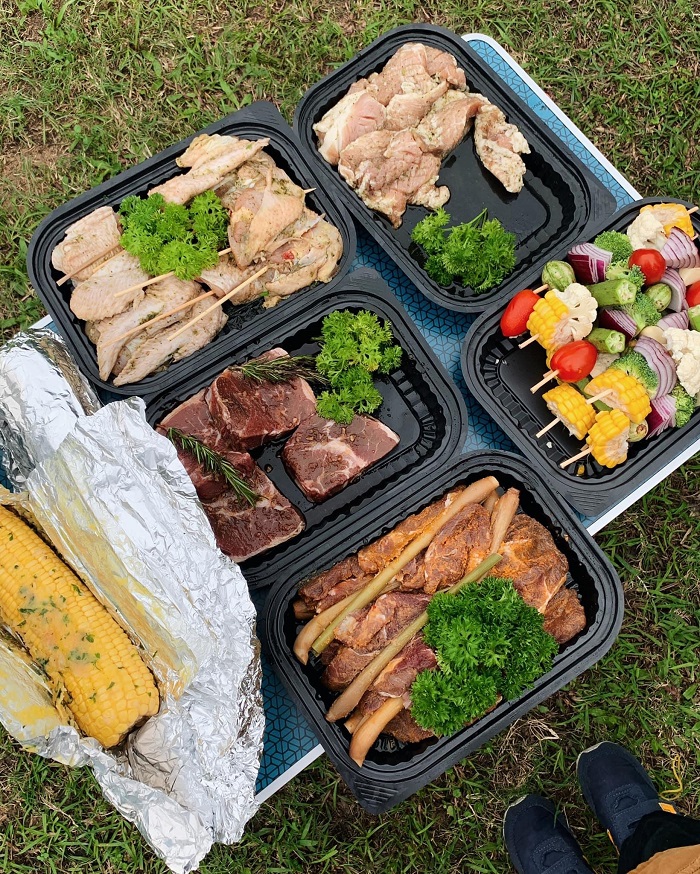
Once you’ve gathered your ingredients, it’s time to hit the trail and enjoy cooking outdoors. Here are some simple meal ideas that incorporate your market finds and celebrate the spirit of Vietnam outdoor cuisine:
1. Vietnamese Stir-Fry
Using a portable camping stove, quickly stir-fry your fresh vegetables with dried meat or fish. Toss in some soy sauce or fish sauce for flavor. Serve this over cooked rice or noodles for a satisfying meal.
2. Fresh Spring Rolls
Wrap your fresh herbs, vegetables, and proteins in soaked rice paper for a refreshing meal. This simple dish reflects the essence of Vietnam outdoor cuisine. Add a dipping sauce made from peanut butter, hoisin sauce, and a splash of lime for a flavorful kick.
3. Instant Noodles (Mì Ăn Liền)
A staple for any camping trip, instant noodles are quick and easy to prepare. Simply boil water, add the noodles, and toss in some fresh vegetables and herbs for a hearty meal. You can also add leftover meats for extra protein.
4. Bánh Mì BBQ
Before heading out, consider preparing a few bánh mì sandwiches filled with grilled meats and fresh veggies. They’re perfect for a quick meal on the go and can be enjoyed fresh or cold, making them a delicious part of Vietnam outdoor cuisine.
5. One-Pot Noodle Soup
Bring along a small pot and prepare a hearty noodle soup using your instant noodles, fresh herbs, and any leftover vegetables. This meal is not only comforting but also easy to prepare after a long day of hiking.
Embrace the experience
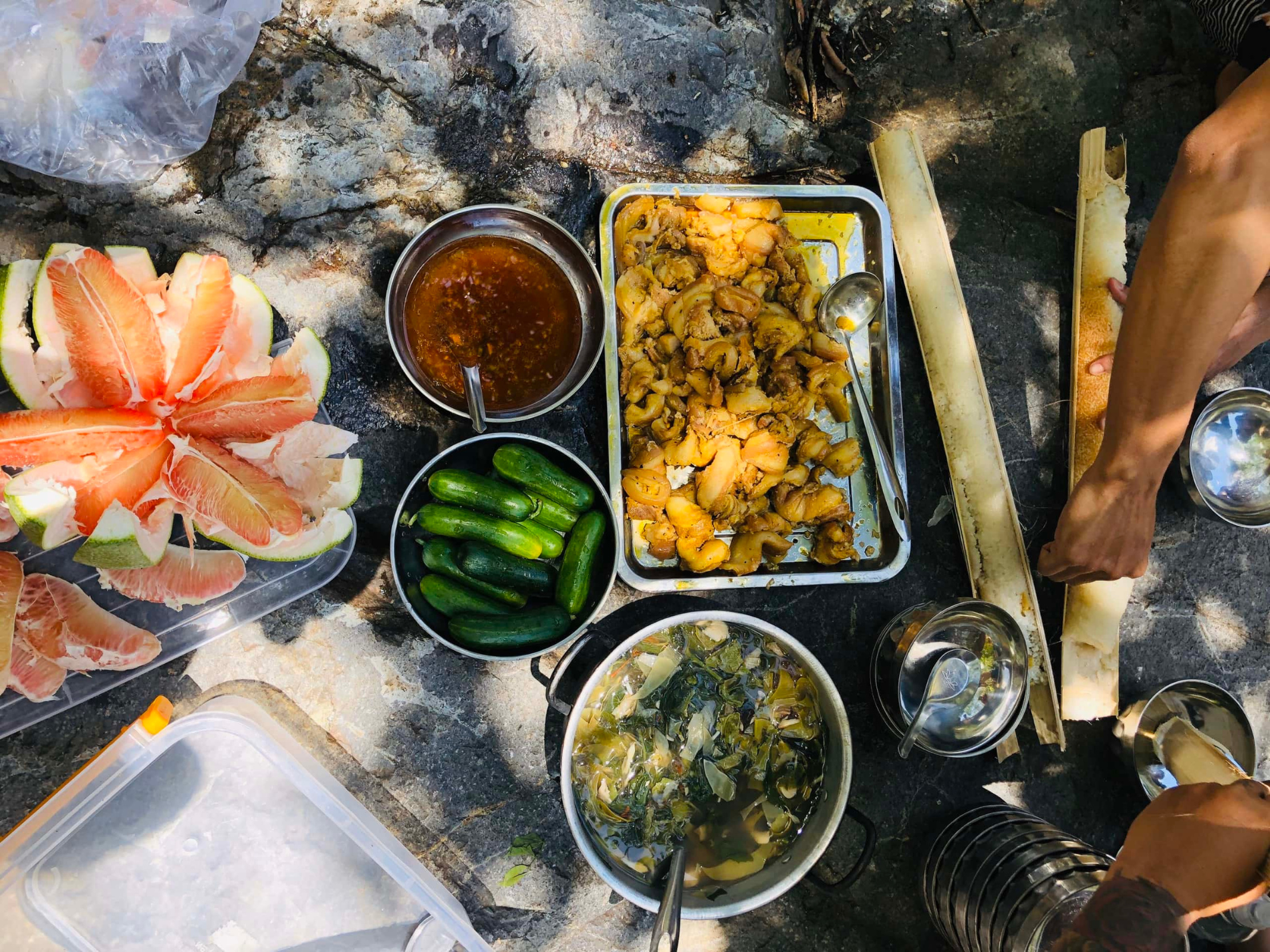
The journey from market to trail is about more than just food; it’s about embracing the local culture and flavors of Vietnam. Each meal crafted on your adventure tells a story, connecting you to the land and its people, and becomes a meaningful expression of Vietnam outdoor cuisine.
As you savor your meals surrounded by breathtaking landscapes, take a moment to appreciate the simple joys of outdoor cooking. Whether you’re camping under the stars in Phong Nha-Kẻ Bàng or hiking the trails of Sa Pa, the flavors of Vietnam will enrich your outdoor experience.
So, next time you plan an adventure in Vietnam, make sure to include a visit to a local market. Gather fresh ingredients, pack your culinary creativity, and enjoy the delicious journey of Vietnam outdoor cuisine that awaits you on the trails.
Conclusion
Ultimately, the journey of Vietnam outdoor cuisine is about more than just food; it’s about embracing the local culture and flavors of Vietnam. Each meal crafted on your adventure tells a story, connecting you to the land and its people. As you savor your meals surrounded by breathtaking landscapes, take a moment to appreciate the simple joys of outdoor cooking and the rich culinary heritage that makes every bite an experience.
Ready to start your culinary adventure? Join our community of explorers in the ExoTrails Facebook Group and follow the ExoTrails Fanpage for daily inspiration and trail tips!
FAQs
What kind of Vietnamese food is best for outdoor adventures?
Focus on lightweight, easy-to-prepare items like instant noodles, rice, dried meats, and fresh, hardy herbs and vegetables sourced from local markets.
Which local markets in Vietnam are best for sourcing outdoor adventure food?
Major markets like Dong Xuan (Hanoi) and Ben Thanh (HCMC), as well as regional markets in Da Nang and Hoi An, are fantastic for finding fresh produce and dried goods.
How can I keep fresh ingredients fresh during a multi-day hike in Vietnam?
Prioritize hardy vegetables like carrots, use dried meats instead of fresh, and consume the most perishable items on the first day of your trip.
Are there vegetarian options for outdoor cooking with Vietnamese ingredients?
Absolutely! Vietnamese cuisine offers many delicious vegetarian options. Focus on fresh vegetables, tofu (for short trips), mushrooms, rice, noodles, and a variety of fresh herbs.
What essential cooking gear should I bring for outdoor Vietnamese meals?
A portable camping stove, a small pot or pan, and basic utensils are all you need to create delicious meals on the trail.
Can I buy instant noodles with Vietnamese flavors suitable for camping?
Yes, instant noodles (mì ăn liền) are a staple in Vietnam and come in a vast array of authentic flavors like phở, which are perfect for camping.
How can I learn more about Vietnamese outdoor cooking before my trip?
Reading blogs, watching online videos, or taking a local cooking class before your trek are great ways to learn basic techniques and ingredient combinations.

